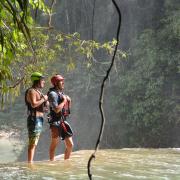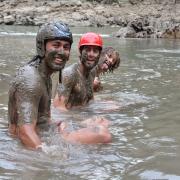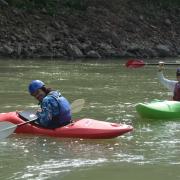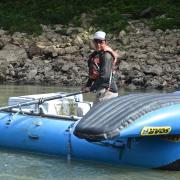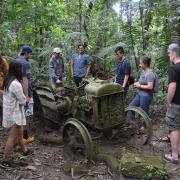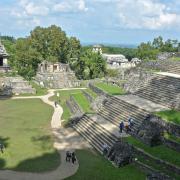Students Examine Culture and Tourism During Southern Mexico Travel Course
A dozen Pacific University students got a taste of two very different types of tourism in January.
The students — who took a 19-day outdoor leadership travel course to Southern Mexico — visited Cancun, a tourist haven known for its beaches, resorts and nightlife, and the state of Chiapas, home to immense biodiversity, Mayan ruins and a large indigenous population.
Between Cancun and Chiapas, they stopped in the city of Villahermosa, the capital of the state of Tabasco and once the center of the first-ever civilization in Mesoamerica.
In Chiapas, the group spent seven days whitewater rafting on the Usumacinta River (or Rio Usumacinta), stopping to visit Mayan ruins, swim, fish and camp on along the river’s banks. The students and their guides traveled along a stretch of the river that straddles Mexico and Guatemala.
One of the objectives of the trip was to get a first-hand look at the differences between mass tourism and adventure tourism. Participants took a pre-requisite class during which faculty experts spoke about Mayan history, the Zapatista revolutionary movement (based in Chiapas) and intercultural communication.
Ariel Watanabe ’20 said she won’t soon forget the stark differences between Cancun, with its luxury hotels, affluent tourists and many outdoor vendors, and Chiapas — where relatively few people speak English and students on the trip felt as if they were truly experiencing another culture.
“Cancun was very commercial. It felt as if we were in America rather than a foreign country,” said Watanabe, who is majoring in environmental studies and minoring in outdoor leadership, Spanish and philosophy. “Chiapas wasn’t commercialized at all. More people spoke Spanish, and it felt as if we were supposed to be blending in with the locals, rather than having people cater to us,” she added.
Watanabe and other students grew close to their local guides, who helped them shop for supplies for the rafting expedition, caught fish from the river and shared insights about Mayan culture and history. Students also got a chance to practice their Spanish with the guides, one of whom spoke Ch'ol, a branch of the Mayan language.
“The students will remember their relationships with our guides, who were with us 24/7,” said Sam Morrison, an outdoor leadership instructor who oversaw the trip. “Students also learned that Mayans are not extinct: Their culture is very much alive.”







